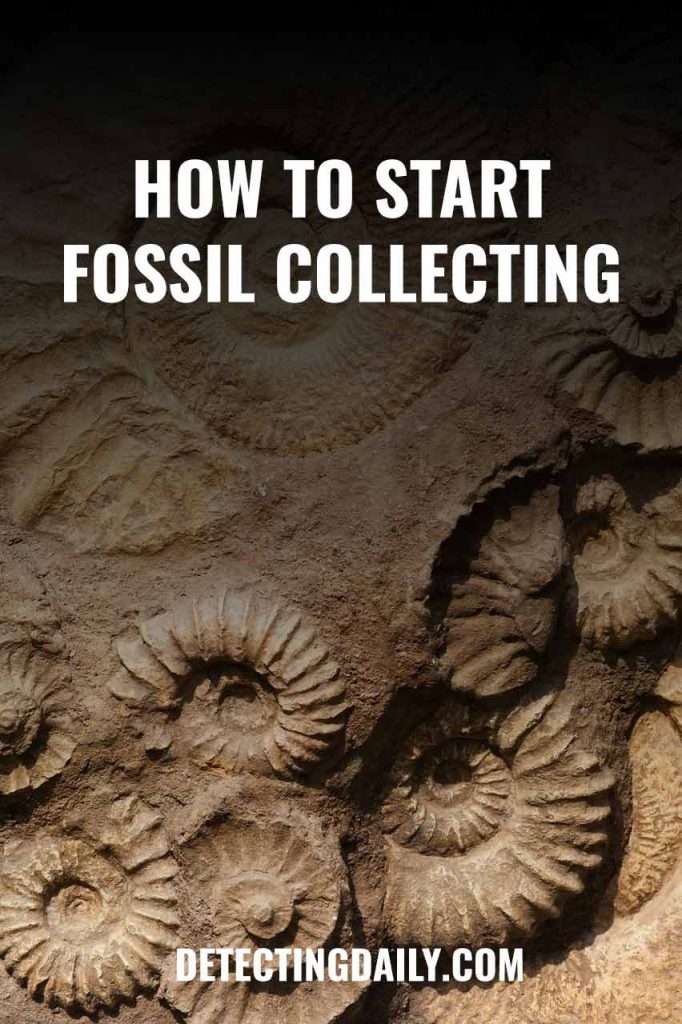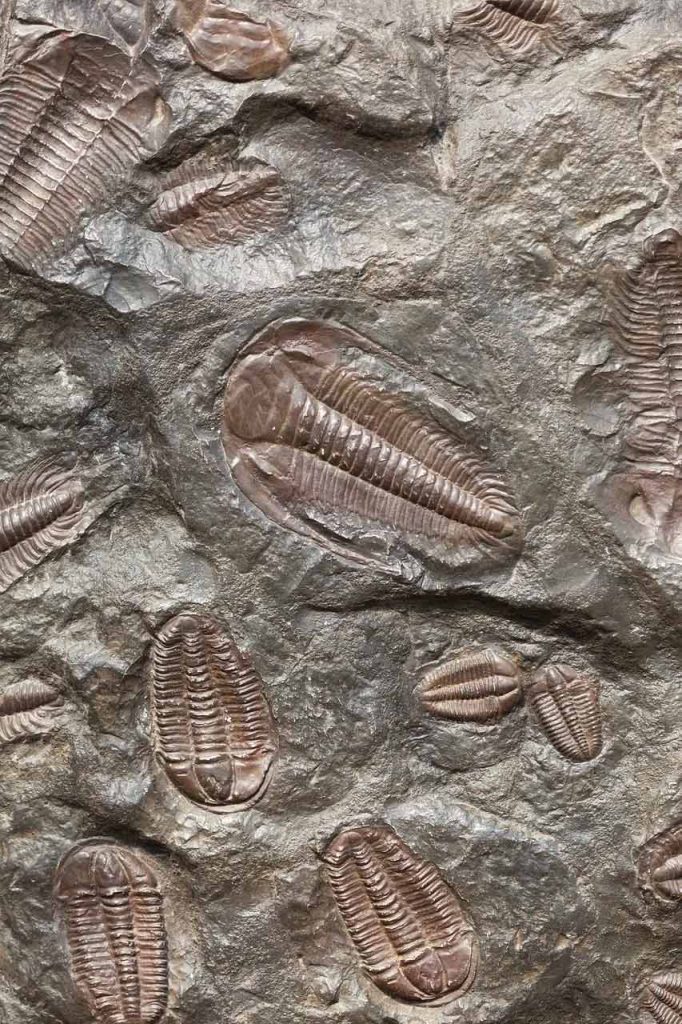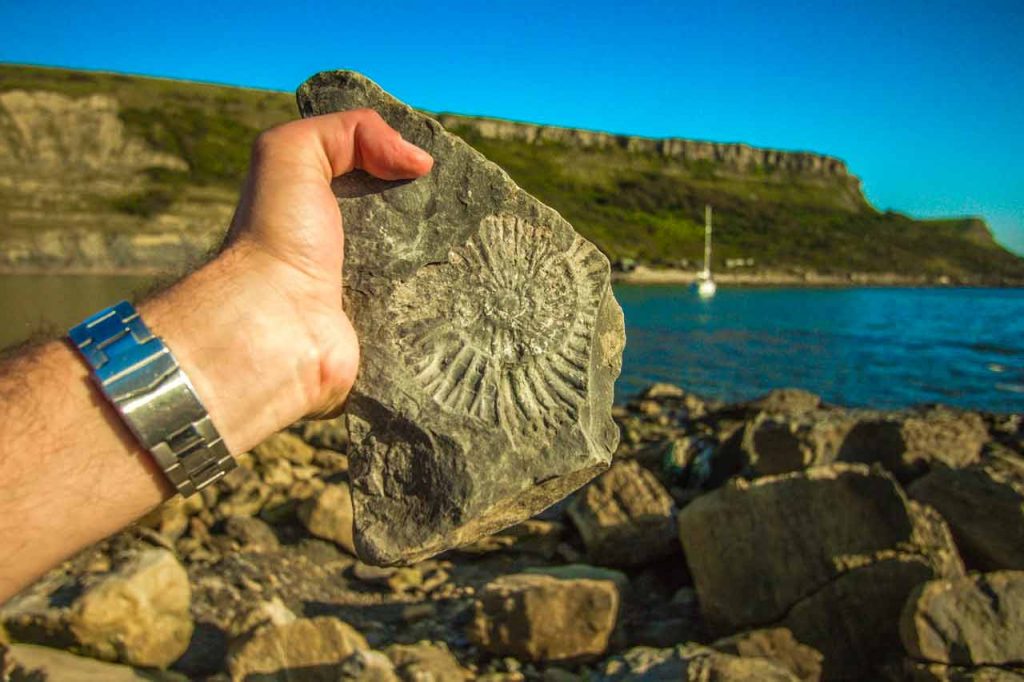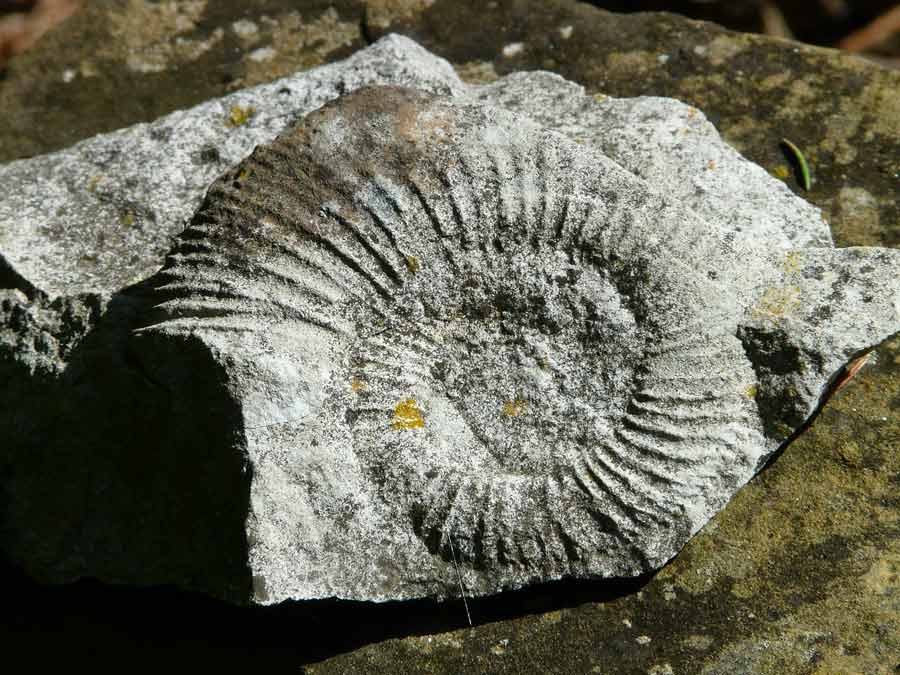We may receive a commission when you make a purchase from one of our links to sites such as eBay and others. As an Amazon Associate we earn from qualifying purchases. Thank you for support!
Does the idea of finding a fossil get you excited? Whether you are a casually curious digger or a budding paleontologist, fossil collecting can be a rewarding and gratifying outdoor pursuit. Here are some tips on how you can start with fossil collecting.
Research: The first important step

As with almost any pursuit, the first thing to start with collecting fossils is research. Learning about the different types of fossils will make it a lot more fun and help you make sure you aren’t wasting time. It will also help you figure out what kinds of fossils to collect.
Keep in mind that all living things can produce fossils. They can be as small as teeth to full skeletons. Fossils can be anything from eggshells to skin and pelts, or even animal droppings. Doing plenty of research beforehand will educate you on the various types of fossils you can find and how you can discover them.
It is also great to study your local geography in your research. Doing this will help you determine what types of fossils you are most likely to find in your area so that you won’t waste too much time in places that wouldn’t likely have fossils.

Local museums are always good places to begin your research. If you have a sizable and well-funded museum in your town, you will likely find someone who is an expert at fossil collection.
If you don’t have a good museum nearby, don’t lose hope. You might have a geographic society you can visit or local enthusiasts willing to share some knowledge. If not, you could always rely on the wealth of online resources available on the internet.
The legalities of fossil collection
Before you go on your first expedition, the first thing you need to think about are the legalities of fossil collection. Depending on your location, you may have to deal with legal restrictions on whether or not you can even search for fossils and take them home.
Most jurisdictions have clear-cut laws that determine whether you can search a particular area or collect any fossils you find. While some places allow you to hunt for fossils, you may not be allowed to extract them from the rock and take them with you. If so, you will have to be satisfied with taking notes, pictures, or videos.

The laws governing fossil collection in the United States are pretty straightforward. In most cases, you are within your legal rights to dig up and sell any fossils you find on your property. Fossil hunting on federal parks and nature preserves isn’t usually allowed.
When in doubt about the legality of your fossil collecting activities, always consult with the property owner. If the land is privately owned, only the owner can grant permission to look for fossils and remove them from the property.
What You Need to Get Started With Fossil Collecting

Some places that allow the general public to look for fossils may provide brushes, zip lock bags, and other necessary items. More often than not, however, you will have to bring your own equipment.
There are ready-made paleontologists’ or geological kits available, most of which will contain the essential tools and accessories. But it is usually better to put together your own kit to ensure that you have what you need for a specific site.
Some of the most essential items to bring along with you are:
- Plastic zip lock bags (sandwich bags will do nicely)
- Tissue Paper for wrapping more delicate specimens
- Markers and labels to write down the details of the fossils you collect
- A notebook for writing down notes, sketches, and directions
- A bag or carrying case with compartments to keep your fossils organized
- A map of the location
Those are the bare essentials, and you should be able to do most of your fossil-searching activities with them. When you want to jump into more fossil collecting a little more deeply, you may want to look into other gear + equipment such as:
- A geological hammer
- A drilling hammer
- A chisel with a hand protection mechanism
- Safety goggles
- Heavy gloves
Apart from the tools and equipment necessary for fossil collecting, you will also need the right clothing, footwear, and personal items. Choose shoes that are sturdy and durable and ensure that they provide adequate traction and protection for the terrain.
Wear the appropriate clothing for the environment, the season, and the time of day. If you are searching for fossils during storm season or throughout the day, make sure that you are prepared for weather and temperature changes.
You will generally want to travel light as much as possible so that you can bring back more specimens with you. Even so, always set aside space in your bag for a basic first aid kit. Bring enough water for the entire expedition as well if you plan on walking a distance away from your vehicle. And always have your cell phone fully charged and on your person.
How to Plan Your First Fossil Collecting Trip
Most fossil hunting trips last from a few hours to an entire day. In any case, it is usually best to start your day as early as possible. This will give you enough time to explore a particular spot thoroughly before it gets too hot or too dark.
Most people start out on casual walks lasting two to four hours at most. Don’t push yourself any more than is necessary at the start. Always be conscious of your physical limitations, especially if you haven’t gone on a hike in a while.
Consider how environmental conditions will affect the terrain as well. You don’t want to get caught in a flash flood or a thunderstorm, so try to be aware of the weather conditions at all times.
That being said, keep an eye out for unexpected opportunities that nature provides. Sometimes, a rainstorm or waves crashing against a rock cliff could wear away at the surface, exposing previously hidden fossils. As you become more experienced, you will eventually develop an instinct for when these opportunities come up.
The best places to find fossils
So, where do you have the best chances of finding fossils? In general, you will want to look in places where rock surfaces are frequently worn or chipped away. Open or exposed cliff faces are always worth exploring, particularly if they are located close to an active body of water.
Roadtrippers has an excellent list of fossil hunting sites in the U.S. You could also check out the Mental Floss’ list of states with fossil-hunting areas that are open to the public.
Fossil collection is one of those pursuits that become more rewarding as you gain more experience. Only you can tell how intensely you will eventually pursue your passion. Whether you remain a casual fossil collector or you channel that initial spark of curiosity into a lifelong career, you will find that fossil collecting is one of the most enjoyable ways to enjoy the great outdoors.
Do you have any questions about how to start fossil collecting? Any tips for beginners you might like to share? Have you found any interesting fossils? Tell us your thoughts about all things fossil collecting in the comments section below!
